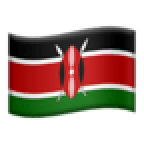Protests in Kenya have produced mixed outcomes, at times unfolding peacefully with cooperation from authorities, and at other times, they can be disorderly and intense.
Yet across the globe, countries grapple with the same challenge of how to uphold the right to protest while preserving public order.
Many governments have developed different approaches, each reflecting unique histories, laws, and political cultures.
&format=jpeg)
Police using a water canon against protestors along Waiyaki Way
The Kenyan Context
Kenya’s Constitution under Article 37 guarantees the right to peaceful assembly, demonstration, and picketing.
Yet, recent protests have repeatedly ended in violence, with police accused of excessive force, live bullets, and mass arrests.
Independent reports have documented civilian deaths, injuries, and inconsistent accountability for officers involved.
Against this backdrop, examining how developed democracies handle similar situations could provide a roadmap for reform.
United States
The U.S. has no single national standard for protest policing; laws and practices vary by state and city.
During the Black Lives Matter protests in 2020, police used tear gas, rubber bullets, and mass arrests, sparking criticism of militarised responses.
Federal reviews led to new guidance on limiting “less-lethal” weapons, using body-worn cameras, and strengthening accountability.
However, inconsistency remains, with different jurisdictions applying divergent standards.
United Kingdom
In the U.K., protests are regulated under the Public Order Act, with detailed guidance from the College of Policing.
Police have a duty to both facilitate protest and maintain order. The strategy emphasises communication, advance planning, and the use of specially trained liaison officers to engage with organisers.
While force can be used as a last resort, tactics like “kettling”, which means containing protesters in a cordon, remain controversial and subject to legal challenge.
France
France maintains one of Europe’s most visible public-order policing systems, led by the Compagnies Républicaines de Sécurité (CRS) and the gendarmerie.
Authorities rely heavily on riot control equipment, including tear gas, water cannons, and “less-lethal” launchers.
&format=jpeg)
Violence flared during the yellow vest demonstrations
During the Yellow Vest movement (2018–2019), these tactics caused serious injuries and provoked widespread criticism from rights groups.
French authorities defend the approach as necessary to contain large, volatile crowds, but debates over proportionality persist.
Germany
Germany’s federal and state police operate under constitutional protections of assembly.
Their approach is often described as “security through dialogue.” Before demonstrations, police meet with organisers to agree on routes and conditions.
Public-order units are deployed, but riot gear is generally held in reserve unless violence escalates.
&format=jpeg)
Thousands came out onto Berlin's streets on August 1 to protest against the measures in place to curb the Covid-19 virus from spreading in Germany. Over 20,000 are expected to turn out for a similar event on Saturday
The G20 Hamburg summit in 2017, which saw intense clashes, revealed both the strengths and limits of this model.
Canada
Canadian police emphasise negotiation and restraint, but their response to the 2022 “Freedom Convoy” protests tested the system.
When truckers blocked major streets and border crossings, the federal government invoked emergency powers, allowing asset freezes and dispersal orders.
A public inquiry later examined whether these measures were justified, reflecting Canada’s emphasis on post-crisis transparency and legal accountability.
Singapore
Singapore enforces one of the world’s most restrictive protest regimes. Under the Public Order Act, all public assemblies require a permit, and unauthorised protests are swiftly dispersed.
The government argues that strict control is necessary to maintain harmony in a densely populated city-state.
Critics contend that such rules severely curtail free expression. While order is maintained, spontaneous demonstrations are virtually absent.
&format=jpeg)
Attendees at a public rally hold signs during a protest against the death penalty at Speakers' Corner in Singapore on April 3, 2022
South Korea
South Korea has a vibrant protest culture, with demonstrations often numbering in the hundreds of thousands.
The Assembly and Demonstration Act requires organisers to notify authorities, and protests are generally tolerated if peaceful.
Large-scale “candlelight” vigils have become a symbol of civic participation.
However, police intervene decisively when violence or property destruction occurs, using water cannons and arrests to restore order.
Lessons for Kenya
A survey of these countries reveals that while no nation has a flawless model for handling protests, there are valuable lessons Kenya can draw.
The U.K. and Germany, for instance, demonstrate the importance of dialogue before confrontation, with liaison officers and advance negotiations helping to defuse tensions before they erupt.
Canada shows the value of transparency and accountability through its independent inquiry into the Freedom Convoy response, highlighting the need for credible reviews after major demonstrations.
&format=jpeg)
Police clash with protestors in Roysambu
France’s experience, on the other hand, highlights the risks of over-relying on so-called “less-lethal” weapons, reminding Kenya that stricter rules on the use of force are essential.
The U.S., meanwhile, highlights the risks of inconsistency. Different standards across states have created confusion and uneven policing.
Singapore represents the opposite extreme with its highly restrictive system. Kenya doesn’t need to go down that road, but it could learn from the administrative clarity and streamlining of permits
Finally, South Korea provides a powerful example of how respecting civic culture strengthens democracy.
By allowing large, peaceful gatherings, it proves that protest can coexist with order. For Kenya, the lesson would be to ensure laws and policing practices support, rather than criminalise, legitimate expression.
Protests are a safety valve for democratic societies. How they are policed can either strengthen public trust or deepen divisions. Kenya’s challenge is to protect both the rights of citizens and public order.


&format=jpeg)
)
&format=jpeg)
&format=jpeg)
&format=jpeg)
&format=jpeg)